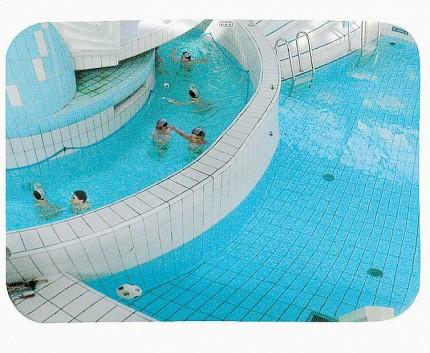Swimming is a popular activity for adults and children alike but accidents can easily occur at public swimming pools if the proper procedures are not carried out.
A drowning can happen in the blink of eye and even the most vigilant parent or lifeguard can lose sight of a child. Fortunately, there are steps a public swimming pool operator can take to better prepare for an emergency situation. Examples include:
- Installing wide angle swimming pool convex mirrors to increase visibility
- Preparing an emergency poolside kit
- Training lifeguards and attendants to handle cases of drowning
- Informing staff of the appropriate safety systems
Maintain Sight of Obscured Areas
Larger public pools often have areas with limited or no visibility. When swimmers drift to these spots it can make it difficult for lifeguards to properly maintain sight of them. With a strategically placed wide angle swimming pool convex mirror, however, lifeguards can have an unobstructed view. This, in turn, reduces the likelihood of an accident happening.
When shopping for one of these devices, make sure to purchase one with resistance to chlorine since repeated exposure to the fumes can cause damage. Also look for one with a durable, scratch resistant face in case pool equipment or toys come into contact with it.
Be Prepared for an Emergency
It’s nearly impossible to predict an emergency but staff and personnel can take the necessary precautions to be prepared ahead of time. One preventative measure is to assemble an emergency poolside kit with the following materials:
- Rescue tubes or cans
- Life vests
- Bag valve masks
- Spinal equipment
- First aid supplies (e.g. bandages, swabs, antiseptics, etc.)
In addition to having these items on hand, it’s management’s responsibility to make sure that all lifeguards and attendants are fully aware of safety protocols. This includes what to do if a patron is drowning, when to call for assistance, so on and so forth. It may be necessary to conduct emergency practice scenarios to ensure that all individuals are on point.
Monitor Chemical Levels
Water illnesses often go overlooked in safety manuals and procedures which is a grave concern because chemical injuries account for a large portion of accidents. Pool operators should check the pH levels and chlorine levels several times a day and even more frequently during high traffic months. If left unchecked, swimmers who come into contact with the pool bacteria can get gastrointestinal illnesses, or ear, eye, and throat infections.
Clearly Label Pool Rules
>Pool rules are in place for a reason. Before young children enter a pool, it’s a good general practice to have them read through each one and confirm that they understand. If a child is not a strong swimmer, they should also be required to wear the approved flotation gear.
By following these general guidelines not only will you significantly reduce the likelihood of an injury but you can, in extreme circumstances, save someone’s life. Consult your local authority for additional details relating to pool safety protocols and regulations.



